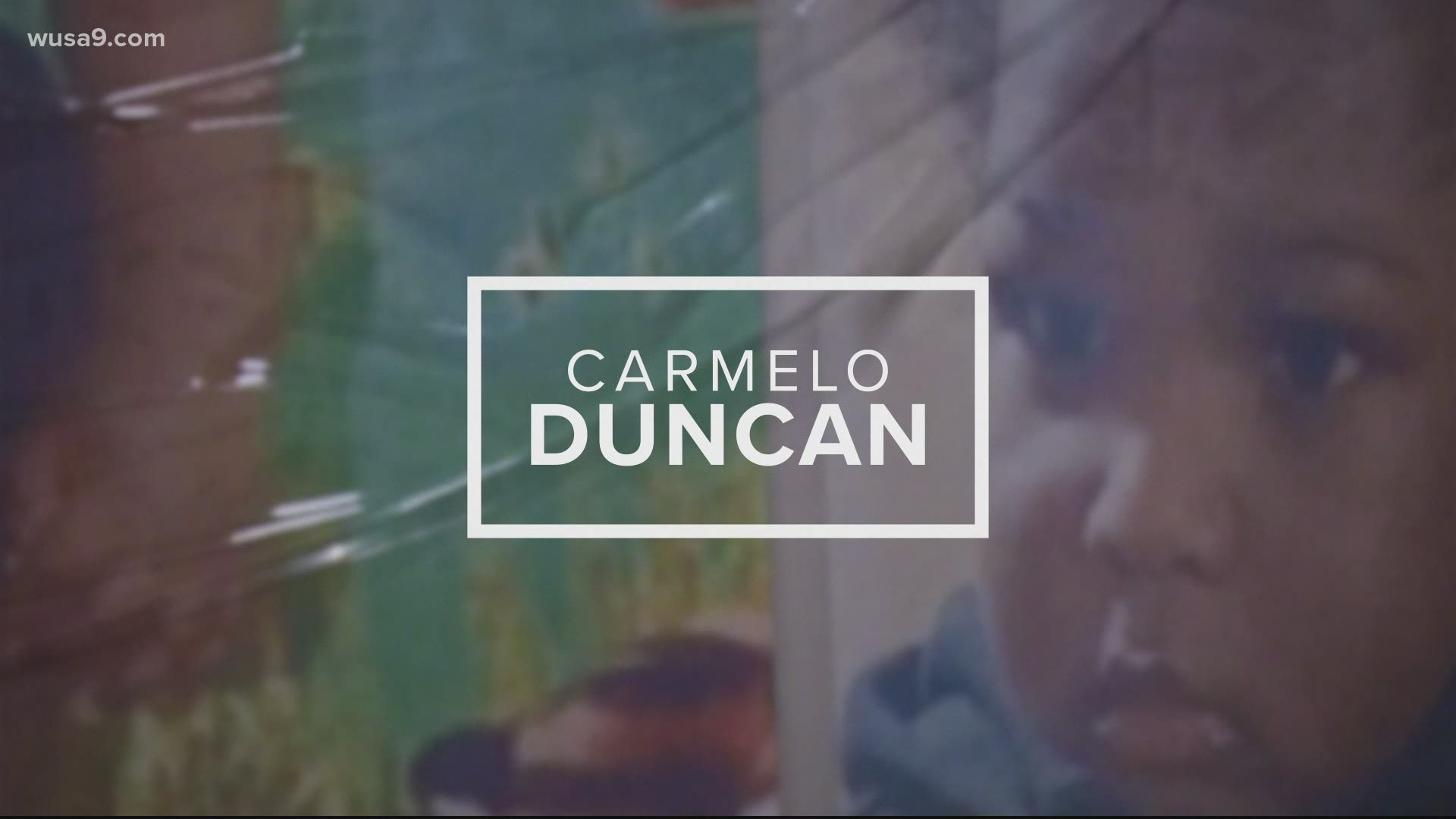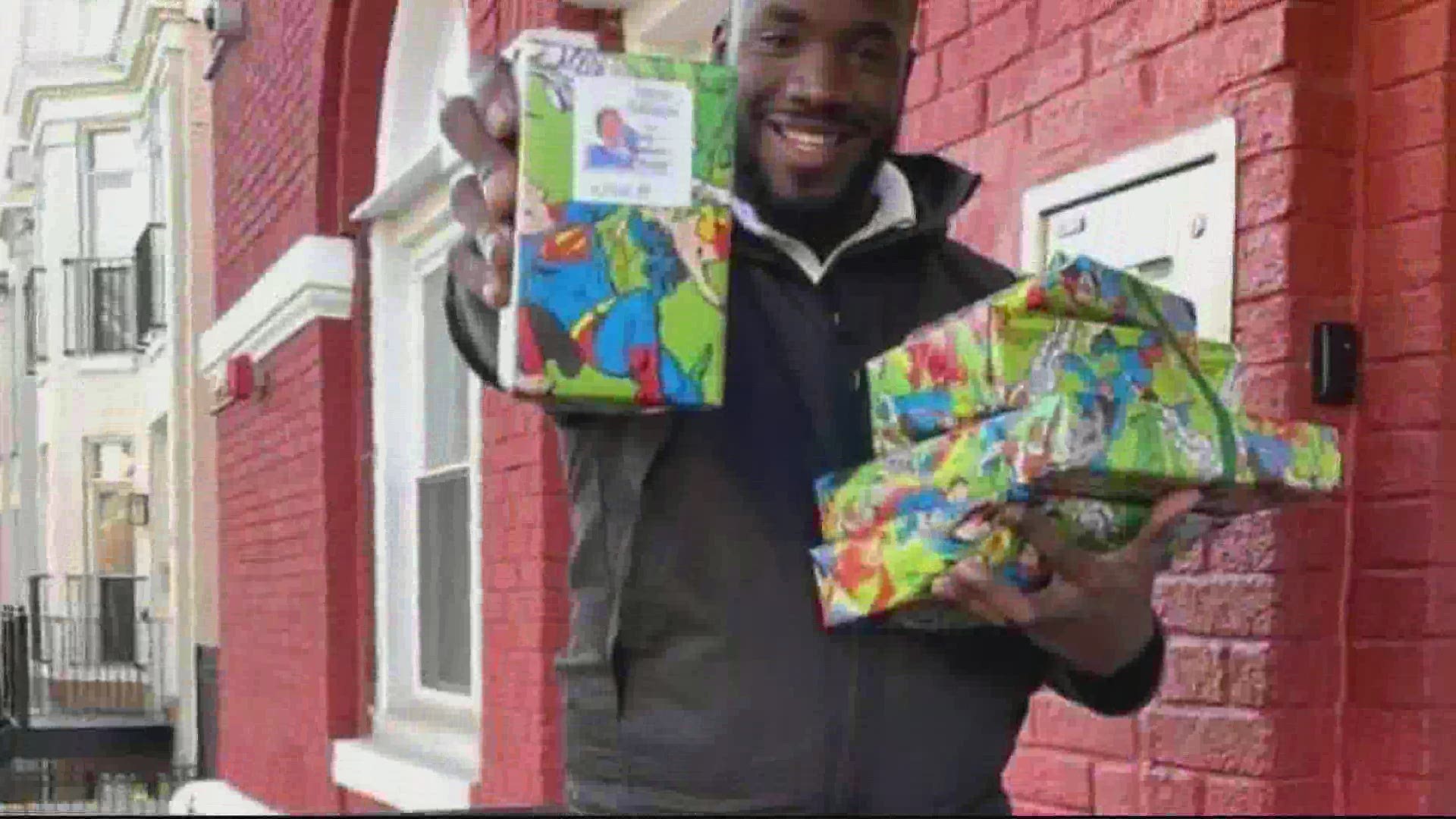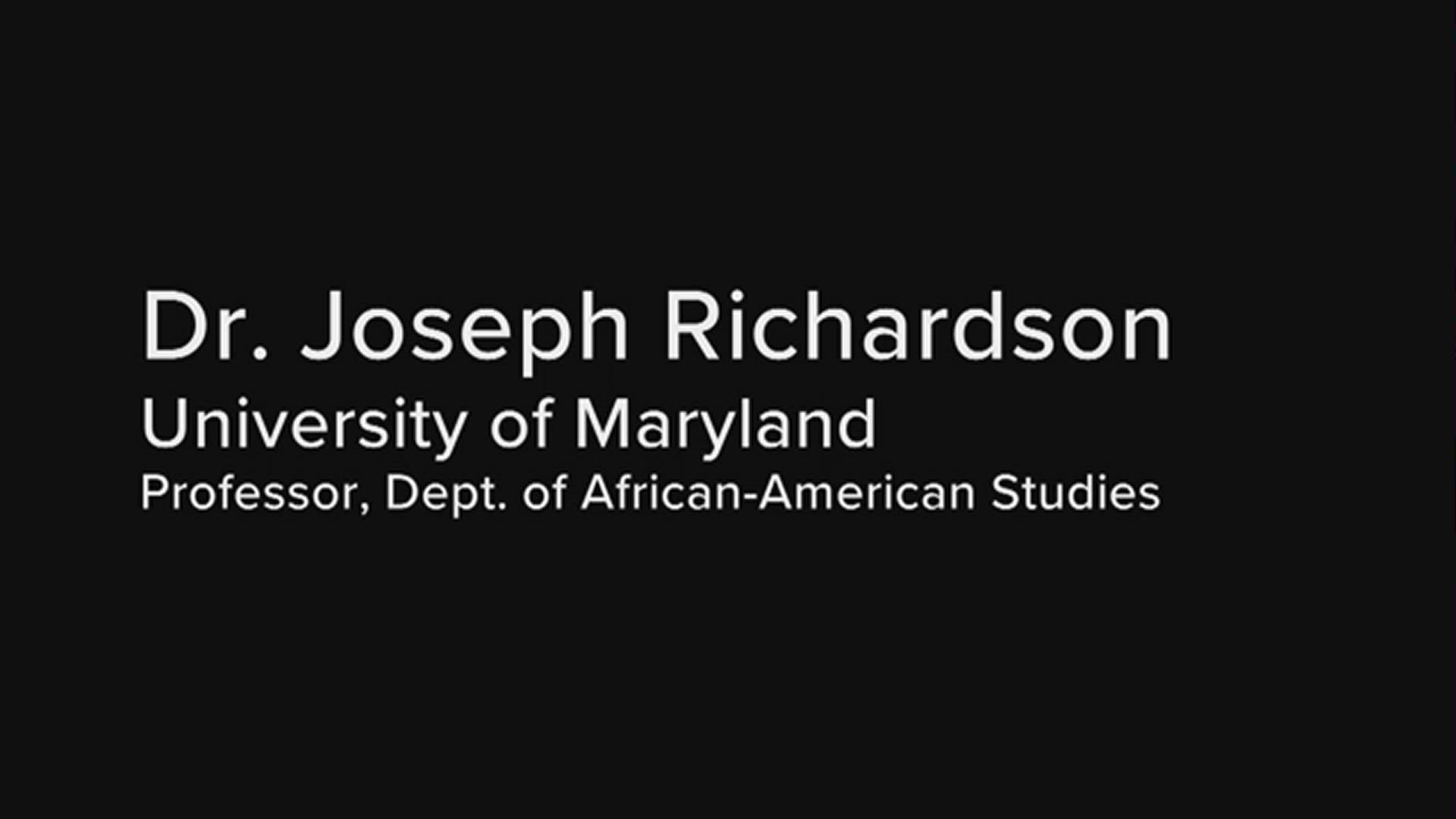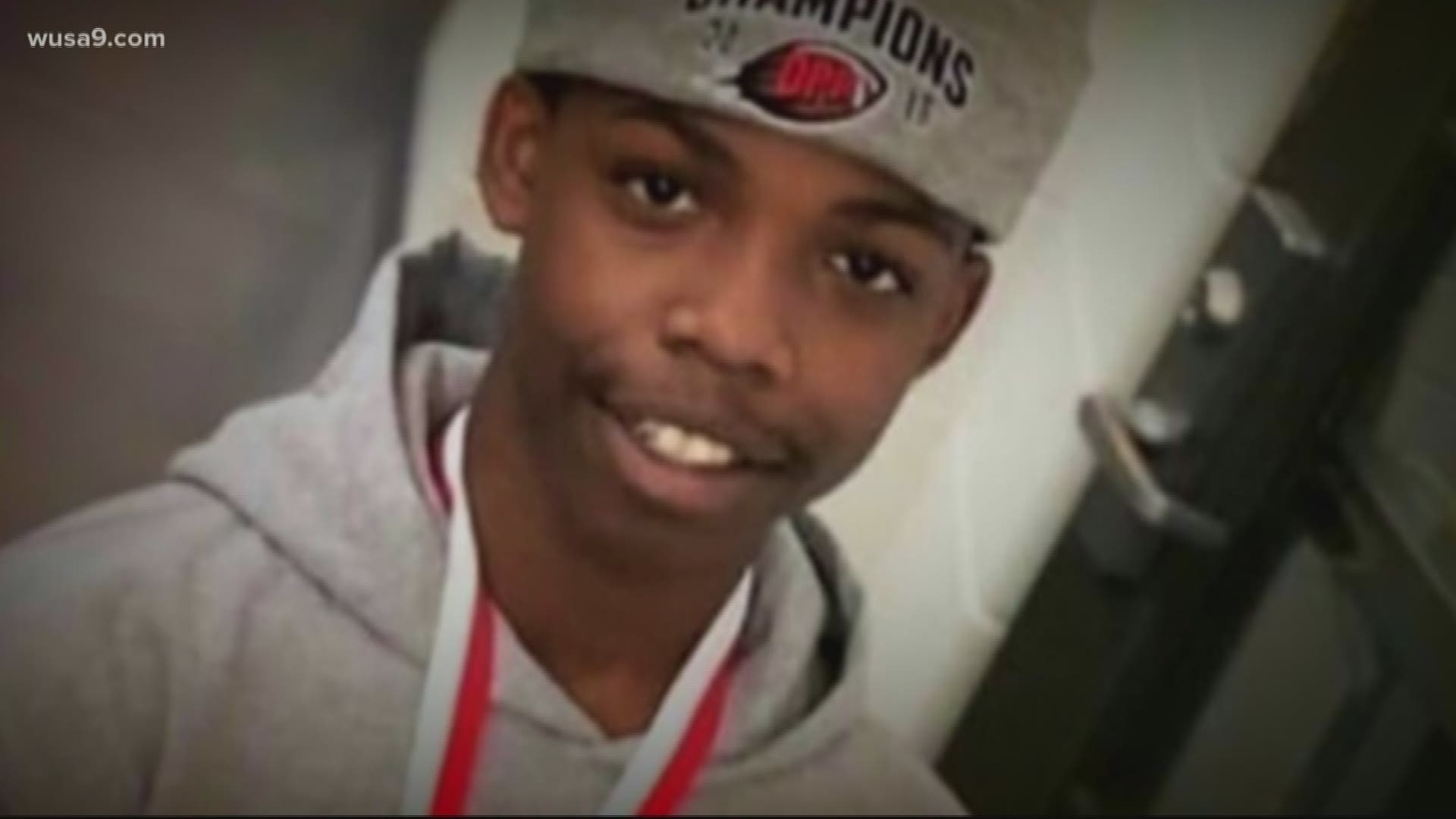WASHINGTON — Data from the District's government and police shows almost 200 people have died from gun violence in the Nation’s Capital in 2020.
The last time D.C. experienced a higher murder rate was 16 years ago, according to the Metropolitan Police Department.
The District's violence in 2020 was capped off by a homicide that shook every corner of D.C.
On Dec. 3, a gunman shot and killed 15-month-old Carmelo Duncan as he sat in the back seat of his father’s car on the 5700 block of Southern Avenue in Southeast D.C.
The Metropolitan Police Department said it has yet to catch Duncan’s killer.
RELATED: A community came together to mourn their loss, to ask the familiar questions | Reese's Final Thought
Just yards away from where Duncan died stands a makeshift memorial in his honor.
The light pole, wrapped with teddy bears and pictures of Duncan, occasionally compels passersby to stop and take notice.
Almost two weeks after Duncan’s death, two young mothers gathered at the light pole to pray.
The women, who did not want to be named, expressed grief over the violence they have experienced in their community.
“We came out here because we are African American women who have sons of our own,” one mother said. “And, we're afraid for ourselves and our children on DC streets.”
The other mother claimed the constant violence she has experienced on the District’s streets has taken a toll on her mental health.
“For me, someone who already suffers from mental health issues, like PTSD, it furthers my PTSD and anxiety,” she said. “You know, so that's a very traumatic thing to deal with.”

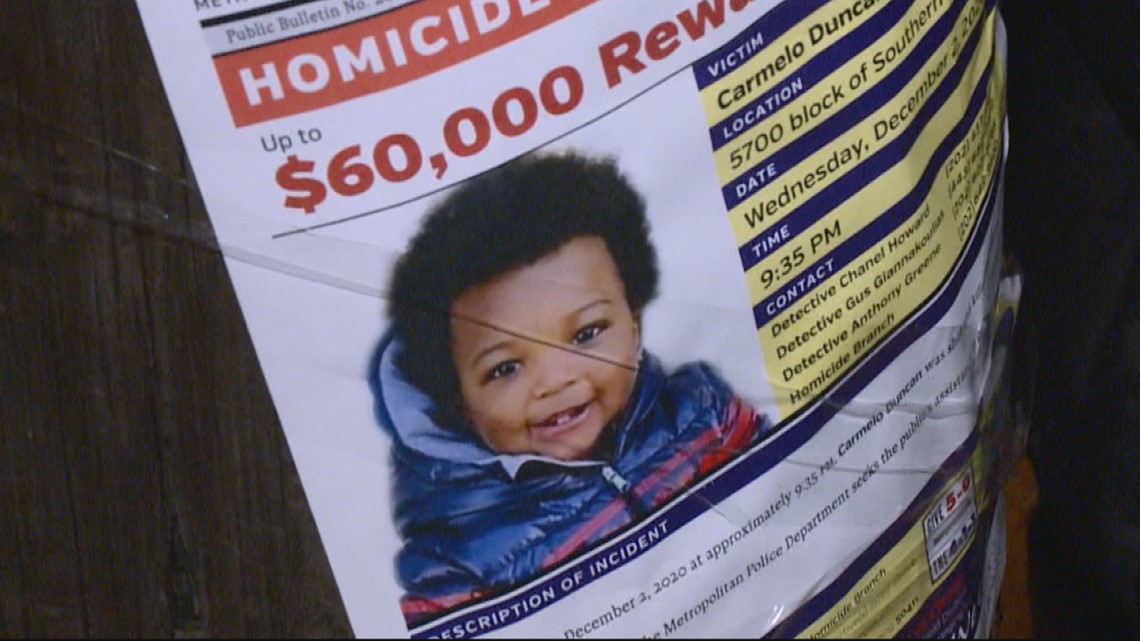
About five miles south of where Duncan was shot, locals in another Southeast D.C. community deal with the same trauma.
“One street over there was another homicide,” points 8B04 Advisory Neighborhood Commissioner Darrell Gaston. “There was another homicide on Gainesville [Street], which is about 300 yards from here. And, so every day is living in fear.”
Gaston represents D.C.’s Hillsdale neighborhood. Hillsdale includes the 2400-2599 block of Elvans Road Southeast.
MPD data shows, in the last three years, that stretch of road has had 28 violent crimes involving guns. That is more than any other block in the District.
According to the Metropolitan Police Department, two of D.C.’s 197 homicides in 2020 have occurred on the 2400-2599 block of Elvans Road Southeast.
“Imagine what it feels like to walk outside and take your trash to the trash can,” Gaston said. “It's a war zone.”
He said many kids in the community have lost two to three friends to gun violence.
“They live in poor housing conditions,” Gaston said. “They go to terrible schools and to hear about everything that they're going through ... Kids in our communities, adults in our communities, have PTSD. And, we're told not to cry, not to show emotion.”
Dr. Joseph Richardson works as a professor at the University of Maryland, College Park in the Department of African American Studies.
He also serves as the executive director of the university’s Transformative Research and Applied Violence Intervention Lab which examines the effects of gun violence on mental health by utilizing Maryland’s two busiest trauma centers as its research labs.
Richardson said gun violence tends to impact more than just the person who was shot.
“What we found in our previous research with caregivers of young Black men who had been shot, was that they were also suffering from symptoms of traumatic stress,” he said. “So, the same symptoms that young men who had been violently injured from firearm injury would suffer, we found the same sort of injuries, with mothers, their romantic partners, their wives, their sisters and other family members.”
Richardson said those symptoms included hypervigilance, hyperarousal, sleep disturbances, and irritability.
He said when people stay in a mode of hypervigilance, their body will overproduce stress hormones.
“So your stress hormones are meant to prepare you for stressful situations that often provide you with protection,” Richardson said. “But if you stay in a state of fight or flight, that you can't turn off, then ultimately those stress hormones become toxic and they begin to weather on your organs.”
He said the people who live in those overly stressful conditions often find themselves battling poverty or living in food deserts.
Richardson said those structural factors combined with constant exposure to violence can trigger other health problems that ultimately lead to premature death.
“Which is why you'll find in a neighborhood like Woodley Park the life expectancy is 89.4 years compared to St. Elizabeth which is 68.4 years,” he said.
Gun violence can also affect the mental development of children.
The TraRon Center assists local victims of gun violence in dealing with their trauma.
Dr. Meg van Achterberg, a child psychiatrist with the TraRon Center, said children who witness gun violence repeatedly can be severely impacted.
“You do not grow up feeling safe in the way that childhood is meant to be,” she said. “It impacts your ability to be playful, to be creative, to focus.”
Gaston said local populations affected by gun violence need to have access to mental health care.
He founded "the Gerald Project" two years ago to address the mental trauma locals receive from gun violence
RELATED: The Gerald Project to host an inaugural fundraiser to support families affected by gun violence
The organization is named after Gaston's 15-year-old godson, Gerald Watson, who was gunned down by masked men near his DC home.
However, Gaston added the District government should also do a better job of providing those mental health resources to communities east of the Anacostia River.
However, Gaston says the battle to address mental health concerns in Southeast DC also involves getting more people to accept it is an issue in the first place.
“How do we take the stigma around mental health and focus on mental wellness and getting yourself together?” he said. “The only way to do that is to try to help people who don't know they need help.”


